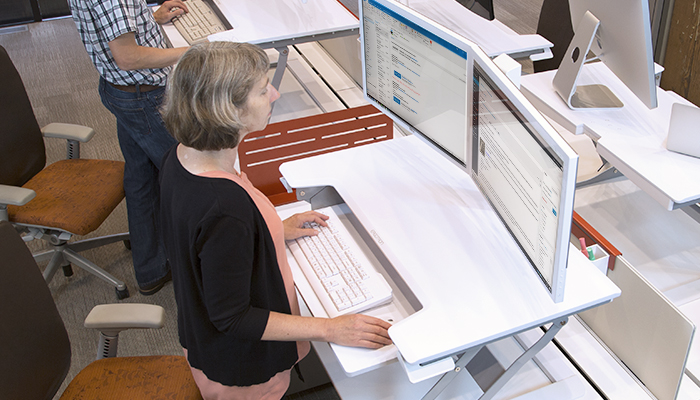I can’t believe it’s been over a year since changing to a sit-stand workstation. I will schedule a follow-up bone density scan next spring, but I am enjoying tangible benefits now:
- I have more joint flexibility and strength in my legs and core. Stronger core equals better posture.
- Sitting less improves digestion. When you think about it, that just makes sense.
- The switch has motivated me to start, and stick with, an exercise routine. I’m up to 25 miles per bike ride, three times a week. I walk 45 minutes each day at lunchtime, if weather permits.
As I look around the Ergotron offices in St. Paul, I can see that about 20% of my co-workers have made the move to sit-stand workstations. Heads pop above cube walls like a prairie dog village.
Carrie Schmitz, our in-house ergonomics specialist, has been working with individuals to evaluate workspaces and determine the ergonomic adjustments required to meet a whole host of related physical symptoms:
- wrist pain
- neck stiffness/pain
- back pain
- tingling elbow/wrist/fingers
- shoulder/elbow pain
- eyestrain
- fatigue
Carrie notes that after correcting faulty workspace design, it is not uncommon for people to experience a new set of symptoms: “I tell people that their body will need time to adjust to a more balanced configuration, and that we may need to tweak the set-up after a couple weeks. I’m always surprised at how obvious the problems are to me, but how invisible to the subject. For instance, the back of a chair may be at its lowest setting, so the lumbar support, though superior, is not at the proper height to be beneficial.”
Have you ever considered a sit-stand option for your workspace? What questions do you have? What has been your experience?



